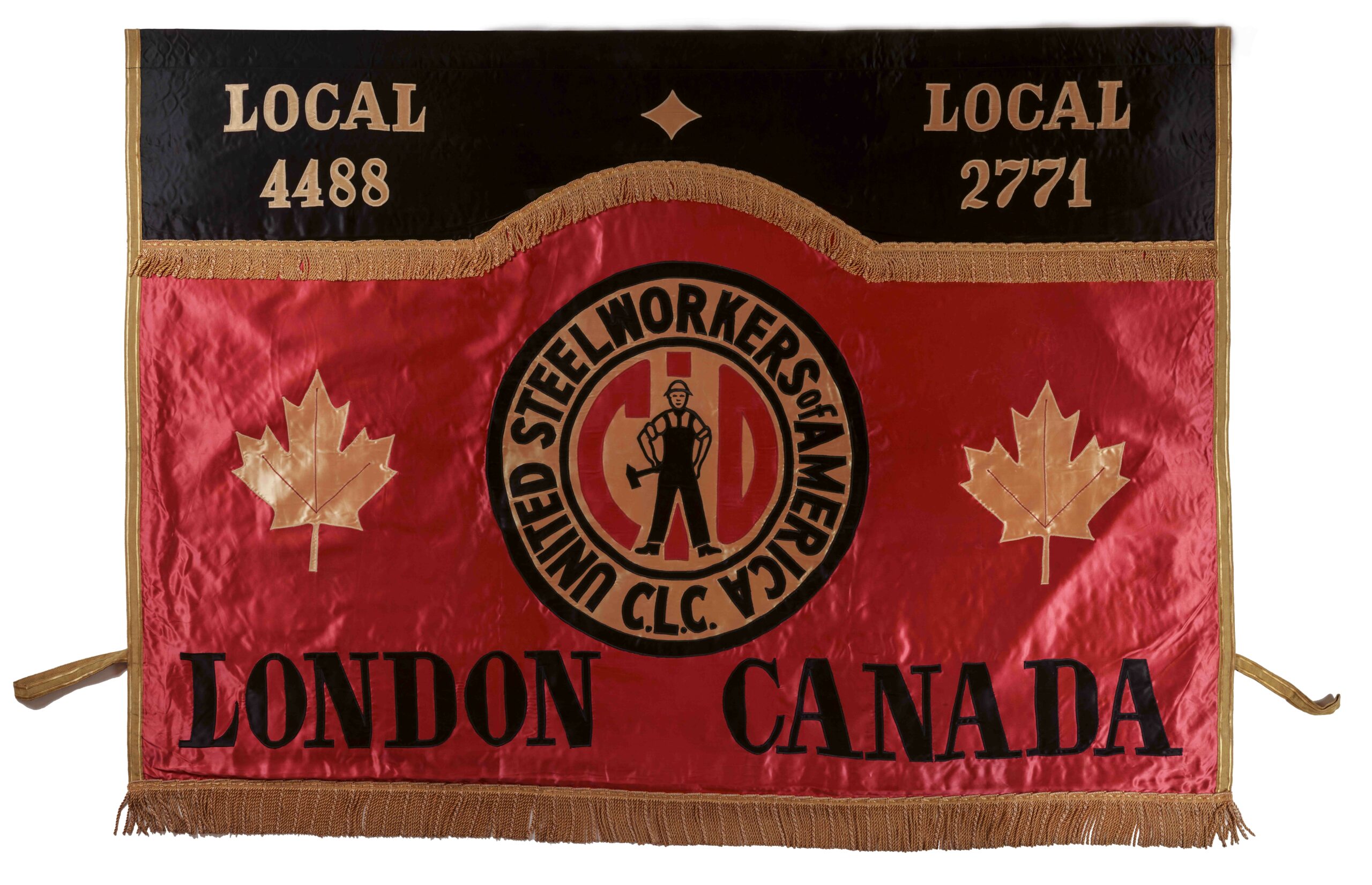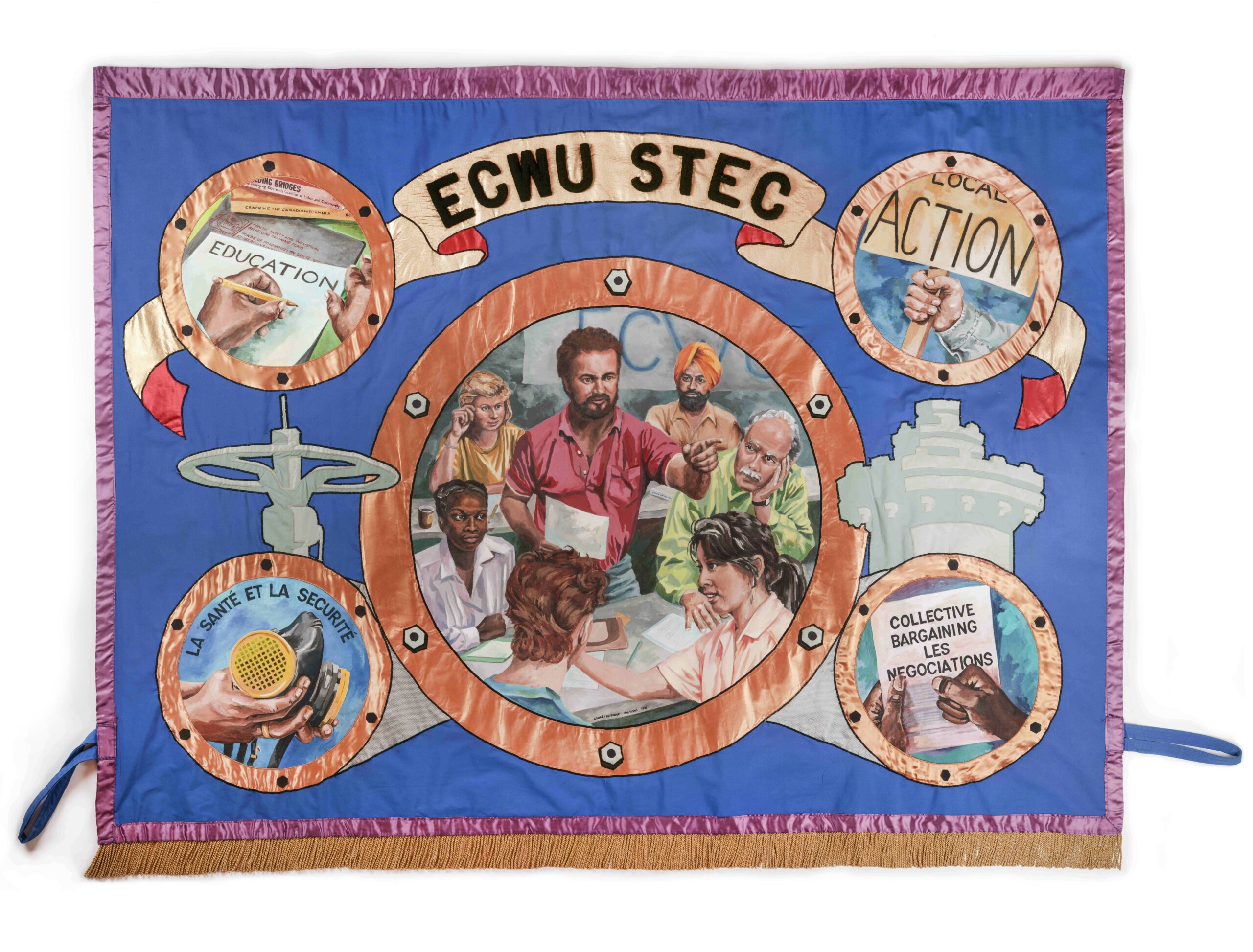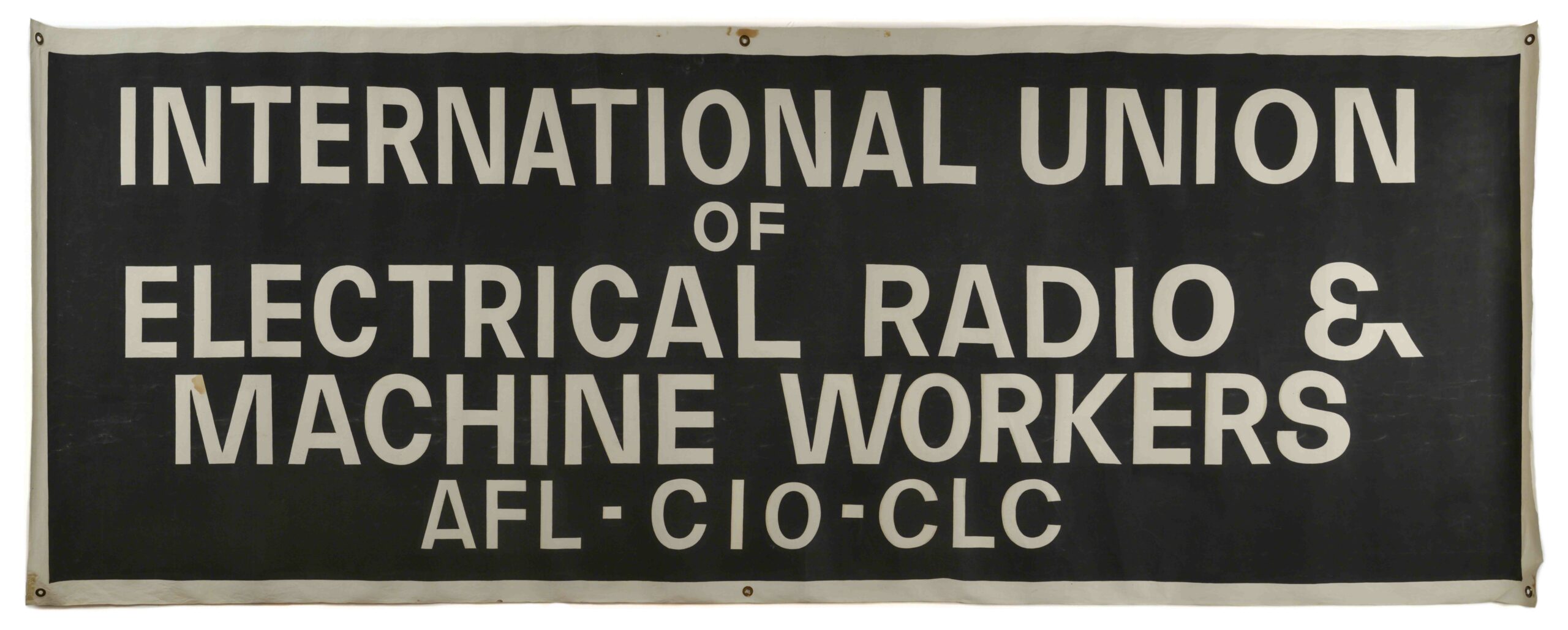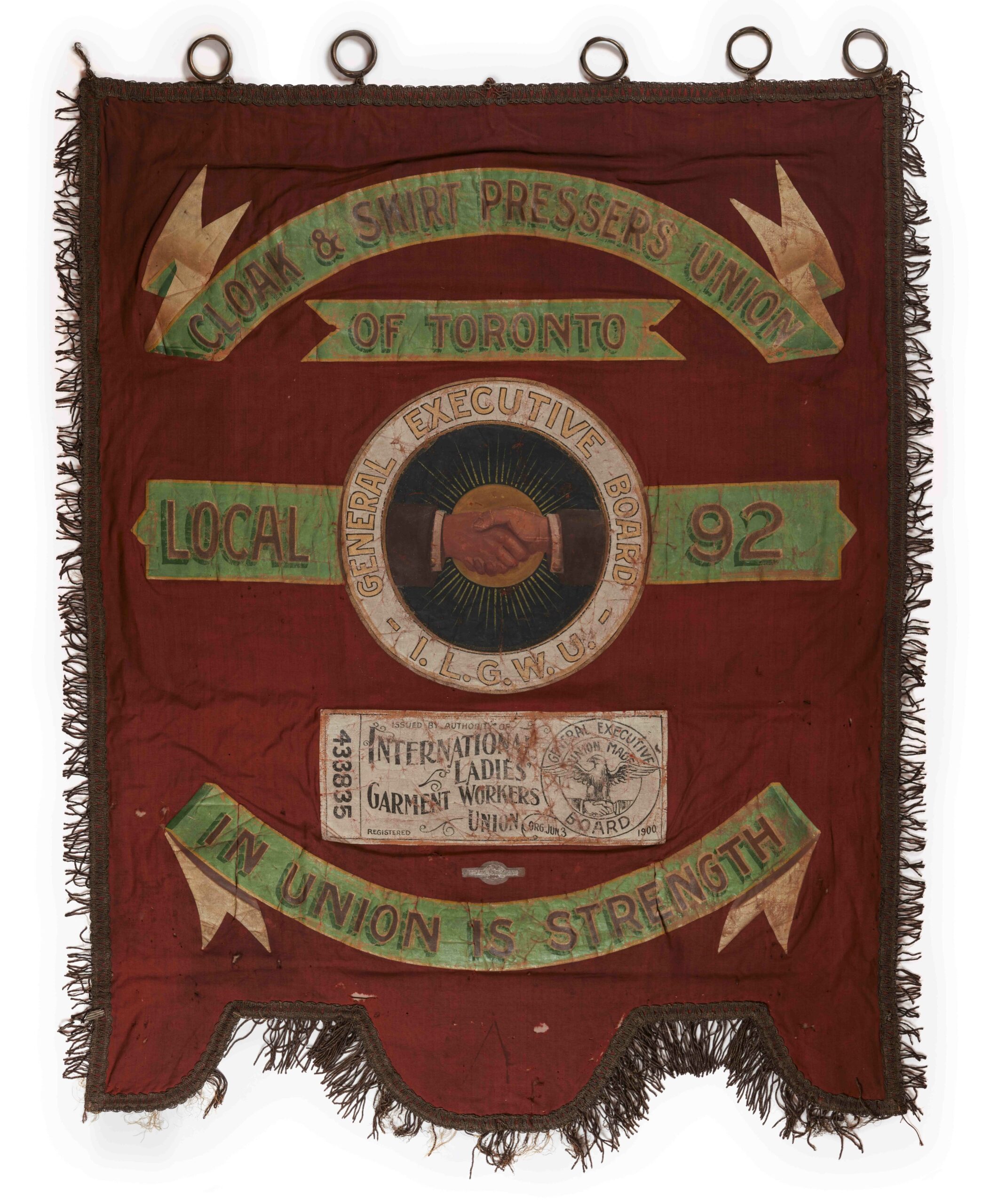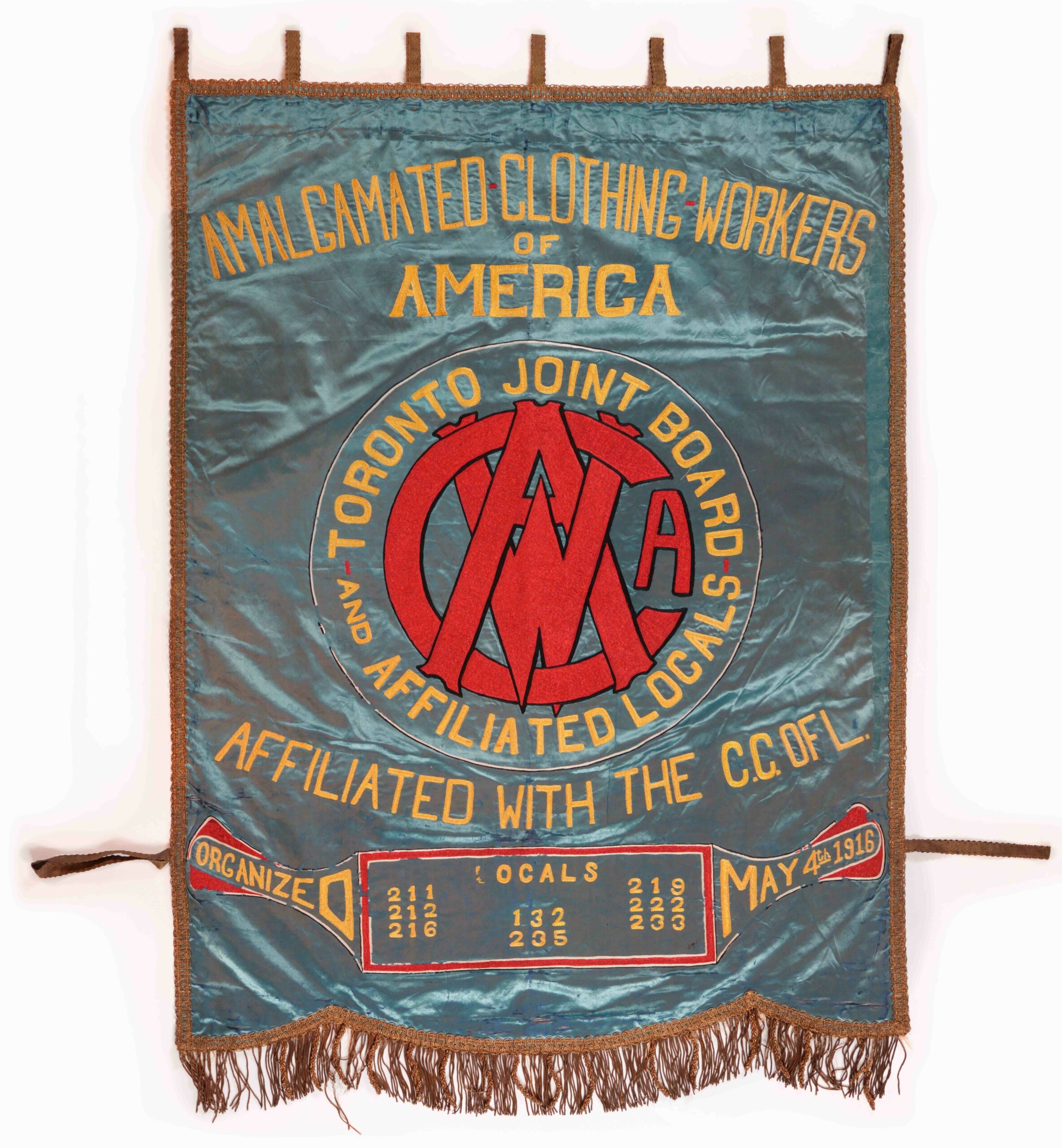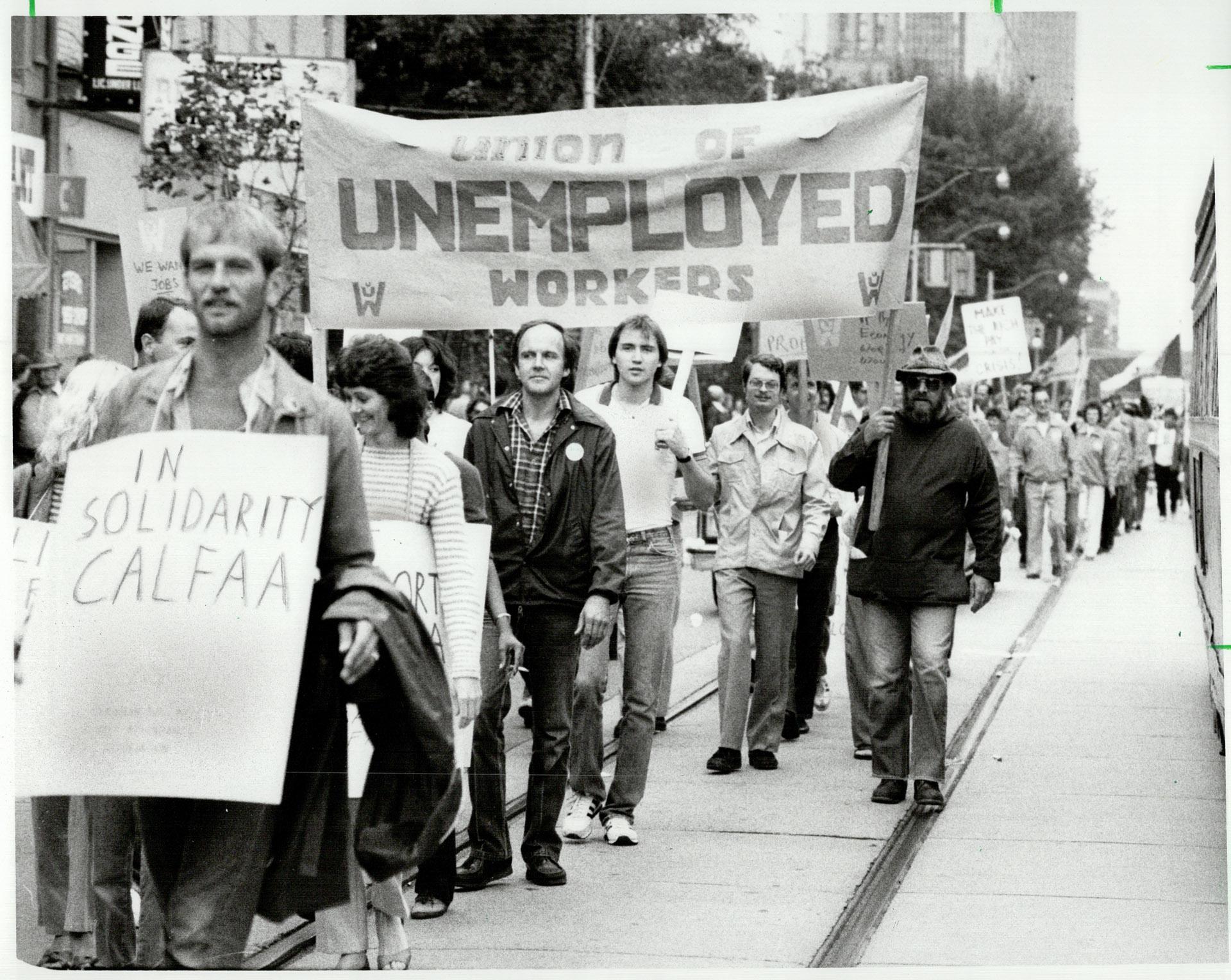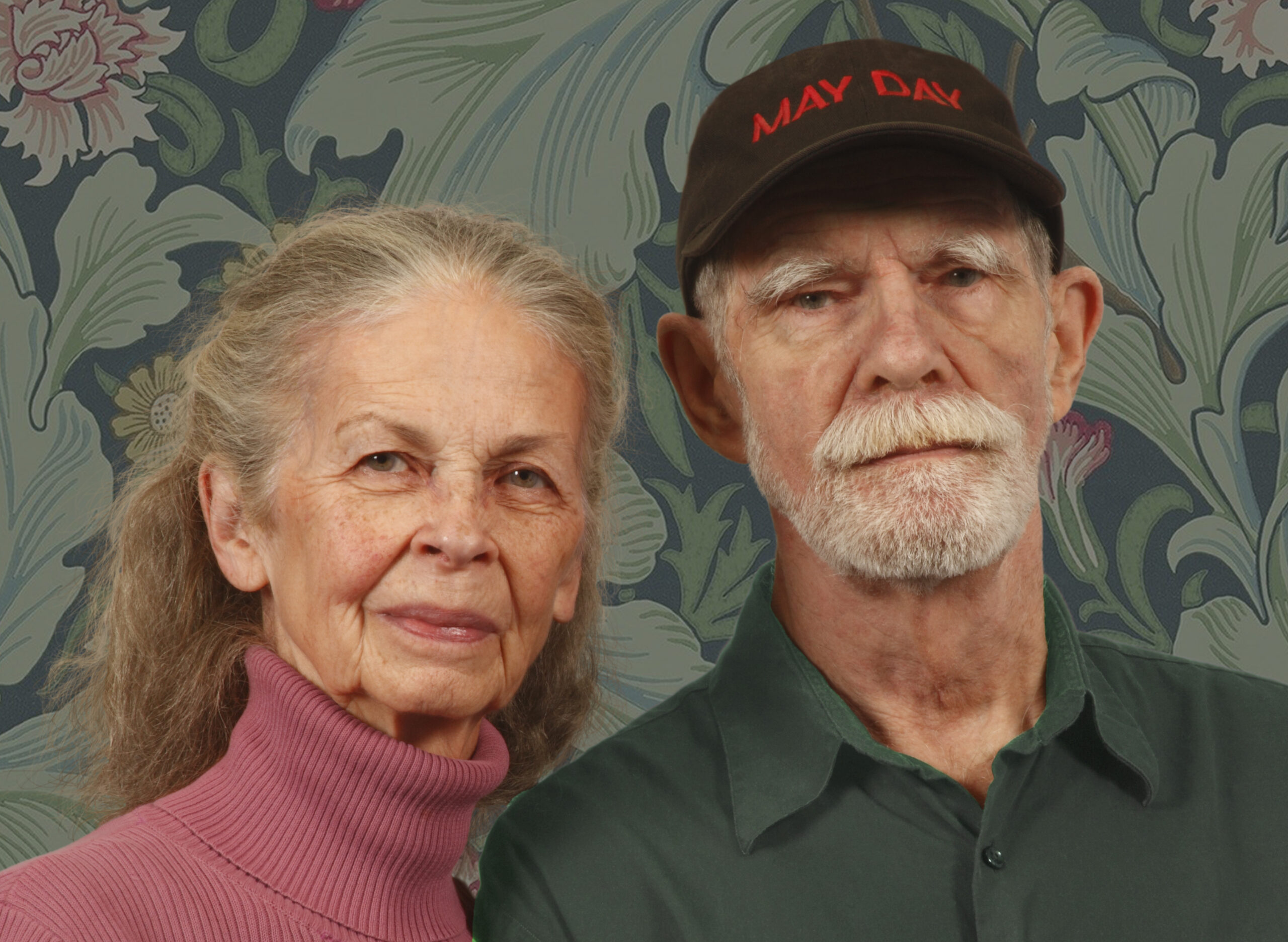
Labour union banners demonstrate collective strength. Carried in parades, brandished at protests, and hung in union halls, they convey messages of common purpose, pride, unity, and the dignity of work.
The earliest labour banners were used to identify groups of workers who did the same job. Recurring images such as shaking hands symbolizing unity and solidarity have appeared on banners across time, and around the world. More recently, banners have demonstrated solidarity with broader social justice issues and struggles, including those of fellow workers.
A banner’s beauty and construction communicated a worker’s pride and the dignity in their work; they were often made with great care and at great expense, intricately and colourfully sewn and painted by skilled artists and regalia makers. In contrast, other banners were made of humble materials. Because banners are made of textile, unions could add, remove, or adjust information on a banner to reflect organizational change. From a patch containing new information added to a banner, to embroidered information carefully ripped out and replaced, changes provide important clues about both banners’ uses, and their users, over time.
All together now! Discover Canada’s labour arts and heritage by exploring the banners, and the inspiring stories of working people, collected into this online exhibition.
Feature:





